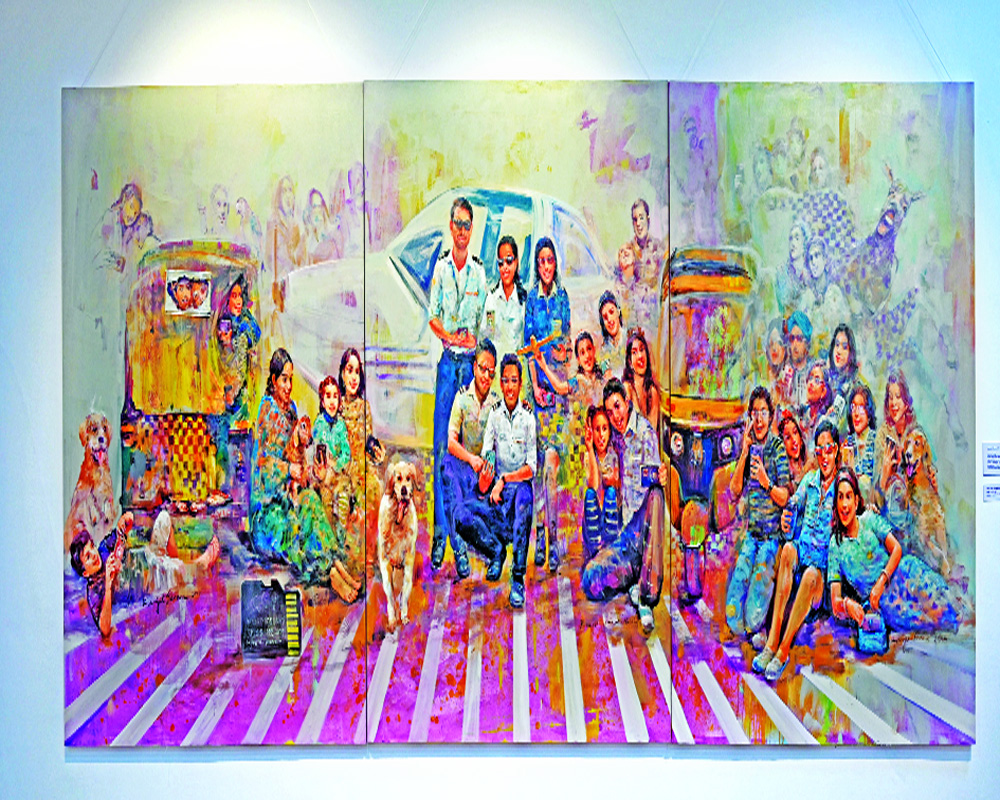An art exhibition showing emotions and stories through bright colours, simple forms and a mix of old and new, says SAKSHI PRIYA
The language of art is often unspoken, yet it compels those willing to observe. Ranjit Sarkar’s Prismatic Narratives, curated by Johny ML at the Visual Arts Gallery, was an experience that made viewers question, reflect, and feel. With his bold strokes, unconventional colour choices and layered storytelling, Sarkar presented a body of work that blurred the line between fleeting modernity and timeless human experiences.
From the first glance, the paintings demanded attention, not with loudness, but with a quiet yet undeniable presence. His palette was mood-driven, allowing emotion to dictate form. Could it be that colour, in itself, tells a story? Each painting seemed to suggest so. In The Face series, Artist captured fleeting human expressions, almost as if preserving strangers in time. Were these faces real, or were they composites of memory and imagination? The ambiguity was part of the charm. The human mind holds on to impressions, and this series played on that very idea.
I Am the Memory Card took on a deeper question, do we truly remember anymore? The painting challenged our reliance on digital storage to preserve moments, raising concerns about the nature of memory in an age where everything is recorded yet so easily forgotten. The size and intensity of the canvas forced viewers to confront this reality: Are we outsourcing our memories, and at what cost? Meanwhile, Illuminated Masks reflected on the struggles of women in a globalised world. While the paintings celebrated success, they also hinted at the unseen battles fought behind the glamour. Were these truly celebrations, or did they mask deeper narratives?
Sarkar’s satirical eye came through in To Sit or Not to Sit, where an untouched sofa became a metaphor for unfulfilled aspirations. In a world where everyone chases status and recognition, how often do we pause to enjoy what we already have?
The empty seat stood as a stark reminder that in our pursuit of ‘bigger things,’ we sometimes forget to live in the moment.
Similarly, Beyond Aspiration turned a moment in space exploration into an artistic dialogue. With Sunita Williams at its centre, the painting acknowledged scientific progress while subtly alluding to deeper cultural ties. Sarkar cleverly balanced pride with a broader conversation about ambition and identity. While fashion and technology change, the fundamental human experience remains the same.
Love, ambition, memory, and identity continue to shape our stories, regardless of time.
Sarkar’s use of colour broke away from conventional naturalism.
Through Prismatic Narratives, Ranjit Sarkar presented an exhibition that invited us to question, to feel, and to look beyond the surface. The real question is:
Did we listen to what his art was trying to say?
























